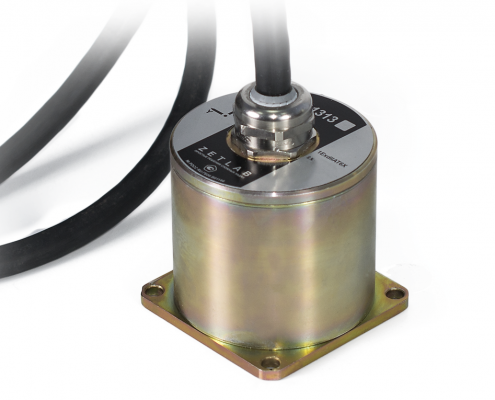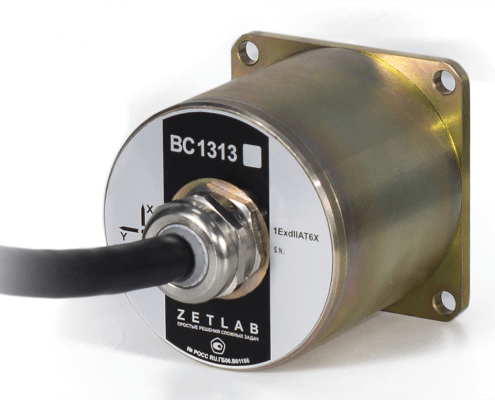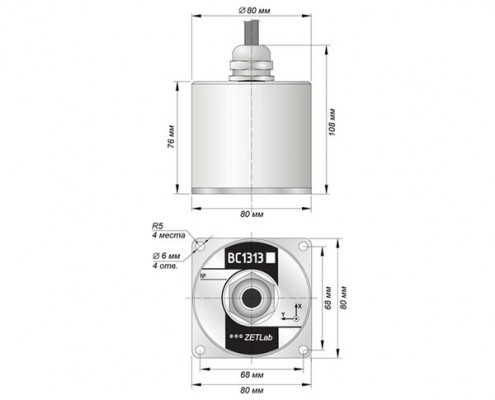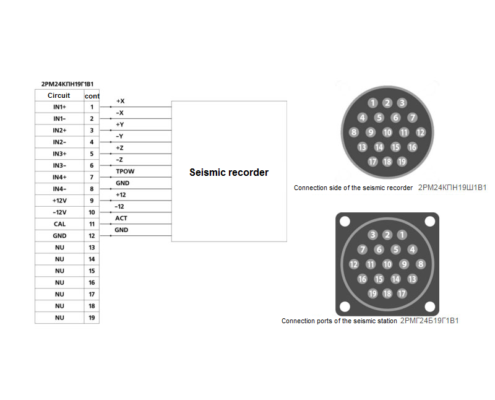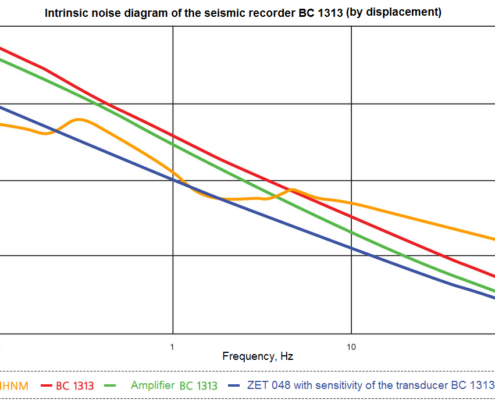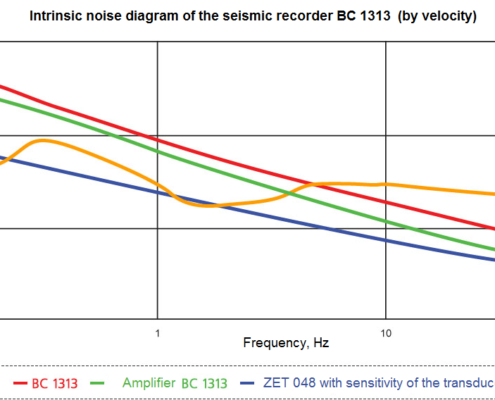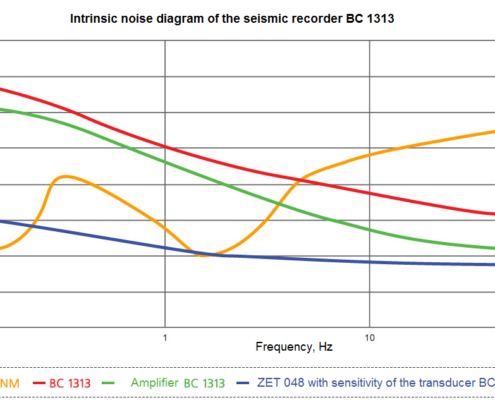BC 1313 TRIAXIAL SEISMOGRAPH
- controlled parameter — vibration acceleration;
- sensitivity 0.5 V/(m×s−2);
- frequency band 0.3…400 Hz;
- integrated system of electric calibration and power supply control.
POR (price on request)
SPECIFICATIONS
of BC 1313 seismographs
| SPECIFICATIONS | ||||
|---|---|---|---|---|
| Sensitivity | 0.2 V/(m×s−2) | 0.5 V/(m×s−2) | 1.0 V/(m×s−2) | 2.0 V/(m×s−2) |
| Frequency band | 0.3…400 Hz | |||
| Extended frequency band | 0.1…400 Hz | |||
| Conversion factor extreme deviation from nominal value | ±10 % | |||
| Frequency Response unevenness | ±3 dB (<0,4 Hz); ±1 dB (0,4…300 Hz); ±3 dB (>300 Hz) | |||
| Maximum value of measured acceleration | 25 m/s2 | 10 m/s2 | 5 m/s2 | 2.5 m/s2 |
| Complementary error caused by change of environment temperature, maximum | ±0.1 %/°C | |||
| Amplitude nonlinearity, maximum | ±10 % | |||
| Level of self-noise RMS, maximum | 1×10−4 m/s2 | 4×10−5 m/s2 | 2×10−5 m/s2 | 1×10−5 m/s2 |
| Mechanical resonance self-frequency, minimum | 900 Hz | |||
| Intrinsic relative error, maximum | ±10 % (<1,0 Hz); ±4 % (1…100 Hz); ±10 % (>300 Hz) | |||
| Integrated excitation system of sensing element using actuator |
shall be determined upon order placement | |||
| Nonlinear distortion coefficient, maximum | ±0.5 (with 1 V output voltage) ±1.0 (at maximum value of measured parameter) |
|||
| Magnetic field impact coefficient 10 A/m, maximum | 5×10−5 m/s2 | |||
| Magnetic field impact coefficient 10 A/m per length unit of high-speed data cable | 10−6 (m/s2)/m | |||
| Direct current level of output voltage, maximum | ±200 mV | |||
| Calibration input resistance, minimum | 600 Ohm | |||
| Insulation electrical resistance, minimum | 20 MOhm | |||
| Supply voltage (bipolar) | ±(10…15) V | |||
| PERFORMANCE PARAMETERS | ||||
| Cable* | integrated, no connector | |||
| Cable standard length | 2 m | |||
| Maximum cable length | 600 m | |||
| Relative air humidity (at 25 °C) | 20…90 % | |||
| Atmospheric pressure | 84…106.7 kPa | |||
| Temperature range | −40 … +70 °C | |||
| Dimensions (without cable), maximum | ∅80×76 mm | |||
| Weight | 1.2 kg | |||
| Pre-set TBF, minimum | 10,000 hours | |||
| Mean lifetime, minimum | 10 years | |||
| Index of dust and moisture protection | IP68 | |||
*cable length shall be determined upon order placement
OPERATING PRINCIPLES
of BC 1313 seismographs
BC 1313 piezoelectric seismographs are intended to convert vibration parameters to a proportional electrical signal. Measurements are carried out for 3 mutually perpendicular axes X, Y, and Z at a time.
BC 1313 seismographs are seismic accelerometers, the parameter measured – vibration acceleration. For BC 1313 seismic transducers, the system is provided for sensing element electrical stimulation using an actuator to determine conversion ratio true value during periodic recalibration without dismantling. Power check system is also allowed for in BC 1313 seismographs.
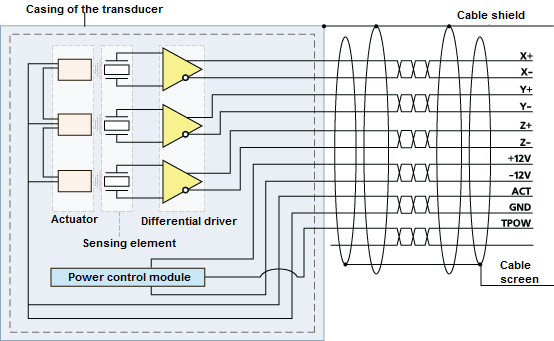
Seismic receiver BC 1313 – schematic layout
CONNECTION
of Triaxial seismograph BC 1313
Standard version of seismographs is supplied with fan-out cable.
| Colour of cable strands | Label | Designation | ||
| Twisted pair | Green | +X | Differential output “+” channel X | |
| White | -X | Differential output “-“ channel X | ||
|
Blue | +Y | Differential output “+” channel Y | |
| White | -Y | Differential output “-“ channel Y | ||
| Twisted pair | Light brown | +Z | Differential output “+” channel Z | |
| White | -Z | Differential output “-“ channel Z | ||
| Twisted pair | Pink | +12 | Power input + | |
| White | -12 | Power input – | ||
| Twisted pair | Light yellow | TPOW | Power check output | |
| White | ACT | Actuator input | ||
| Twisted pair | Pink | GND | General | |
| Blue | ||||
| Yellow | SHLD | Cable screen | ||
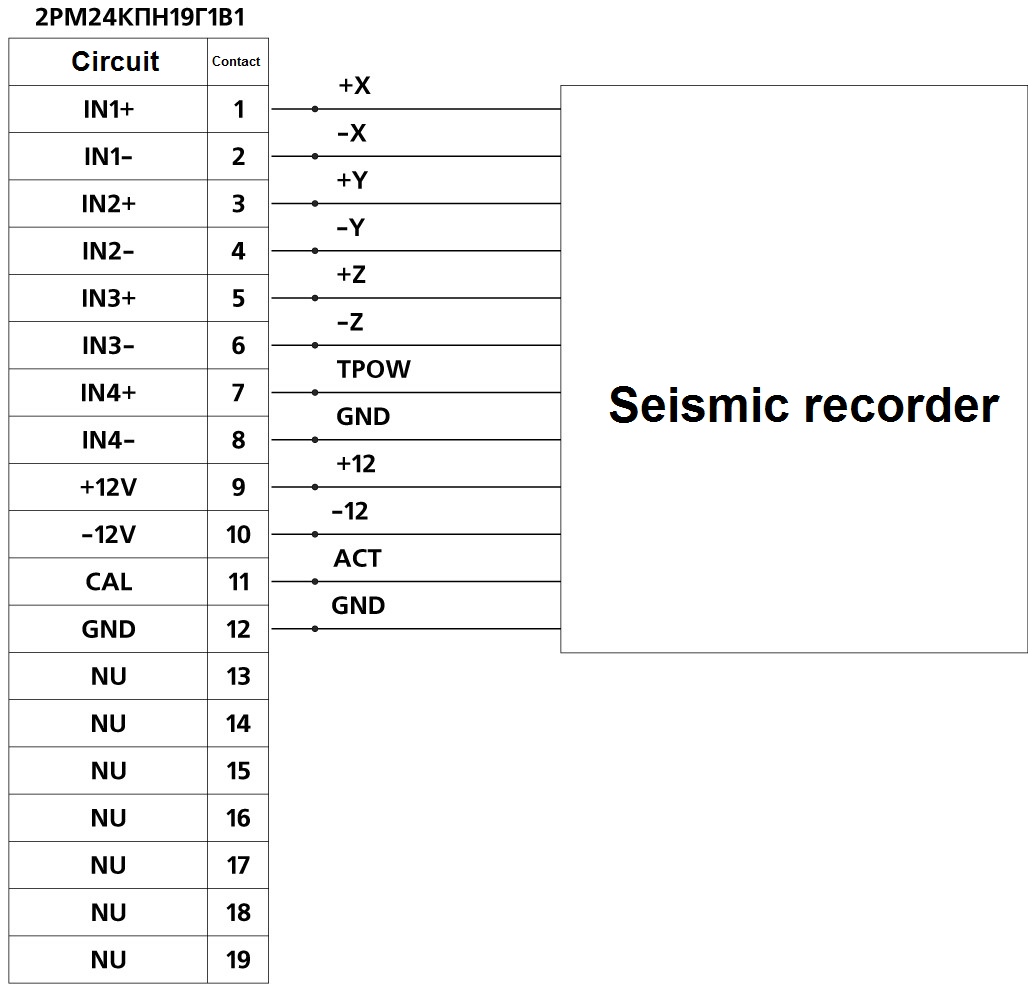
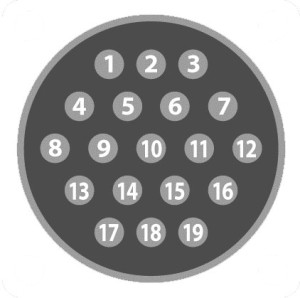
Seismic sensor connector
ZET 048 seismic station and triaxial seismograph BC 1313 form the system of seismic signal parameters measurements, which is applied in various fields. Depending on the task, various seismograph modifications (for acceleration, velocity or displacement) or seismic station version options (industrial or expedition) are used, number of system channels is also changeable, but general technique of measurement is based on seismographs converting vibrations (which can be of various origin) into electrical signals, seismic station recording and digitizing the signals, and ZETLAB SEISMO software or SCADA ZETVIEW applications analyzing the obtained data. This section reviews typical solutions based on seismic systems. A detailed description of tasks, hardware versions and applied methods of analysis can be found in relevant sections.
Application scope of seismographs and seismic stations is seismic exploration and geotechnical survey, where seismic systems are used to perform deep structures research, to detect mineral deposits (mainly oil and gas fields), to solve issues of hydrogeology and geotechnical engineering. But the issues that the seismic system application solves are not limited to that.
One of the most actual triaxial seismograph properties — sensitivity to low-level vibration at low frequencies — makes them irreplaceable in seismic monitoring systems, which are used in seismic areas and for pipeline industry protection. Seismograph signals are processed by seismic stations, which not only alarm the earthquake when registered seismic activity of 6/8 (5/7) magnitude as per MSK-64, but also produce “dry contact” signals, those can be used for pipeline automatic shutoff in seismic hazard.
Another way to protect oil and gas utilities, where seismograph is used as sensing element, is leakage search and monitoring. A system to search, monitor and localize leaks of liquid and gaseous products from pipelines and to reveal the external mechanical impact on those using seismographs, complies with RD 03-299 (detailed design).
Systems for diagnostics and monitoring structures, buildings and facilities serviceability status, based on seismographs and seismic stations, ensure measuring such parameters as natural oscillations pitch period and logarithmic decrement of natural oscillations pitch period along the building main axes (for this purpose triaxial seismographs are used), and other data. Timely detection of building parameter deviations from standards allows detecting and eliminating the cause of impairment, and preventing collapse and accident. Also, infrastructure health can be inspected using seismic systems. Issues of existing structures health monitoring are particularly pointed since the modern bridges suffer from loads that manifold exceed the design load calculated decades ago. Application of triaxial seismographs allows detecting the aging effect, incipient fractures and other defects of structural elements.

